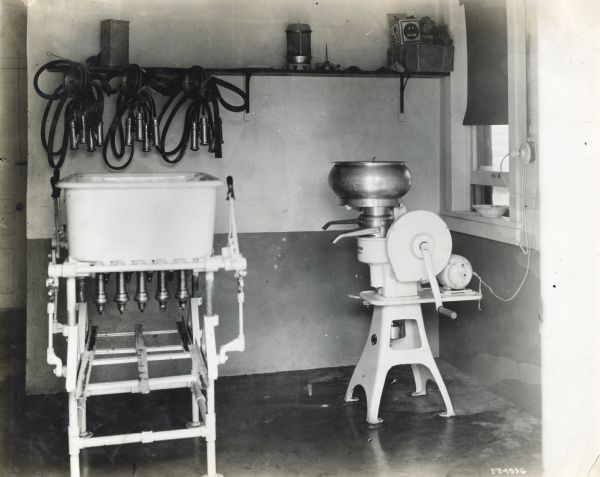Hello History Lovers!
Since many rural families didn’t get electricity until well into the 1930s, folks who had electricity on their farms in the early twenties were very modern. In January 1922, speaking on behalf of his wife as well as himself, Mr. Harper Christensen submitted an article to The Farmer’s Wife–A Magazine For Farm Women extolling the many advantages of having electricity. They found that electric lighting was beneficial inside the house, outside in the yard, and in the barns and garage. Modern electrical appliances helped in all facets of their life–in dairying and pig raising, with housework, and providing the lighting for family fun in the evening once the work was done.
Enjoy!

Electricity On Our Farm
“Electric lights were installed on our farm nearly a year ago. Now we often wonder how we managed to get along without them, not alone for time and labor-saving but for pleasure, convenience, and cleanliness.
Last fall, a year ago, they erected a high line from Albert Lea to Alden, Minnesota, and the farmers received the privilege of connecting. There are thirty-three farms between Albert Lea and Alden electrically equipped.

Electricity on the Dairy
Probably the greatest asset with an electrically equipped farm is on the labor-saving side. We milk with electricity, separate the milk with it, wash and iron with it, and in the near future expect to clean the house with electricity. Running the milking machine with a motor is surely much quicker and handier than a gasoline engine. Sometimes I have cranked the gas engine until I was blue in the face only to have to milk by hand, and the same applies to the cream separator with the motor attached—it runs much more smoothly and more even.
Electricity for Washing and Ironing
Washing clothes by hand is anything but pleasure but my wife says with an electric washer it is fun and says also that she never worries about washday anymore. The ironing is also easy as it takes but two minutes to heat the iron. You have to be careful and not get it too hot for it sure does get hot quickly and electricity is the hottest thing there is.
The Cost of Electricity
As a money-saving proposition, it is a benefit also because with gas and kerosene at the present prices, you could not begin to do what we are doing with electricity for the same money. We pay ten cents per kilowatt-hour for the first 500 kilowatt-hours and for what we use over that is seven cents per kilowatt-hour. We probably will use about 750 kilowatt-hours per year costing us about $67.50.
The Benefit of Electric Lighting
As for convenience and pleasure, it has no equal: there are no lamps to fill, no lanterns to clean. All you have to do is to press a button or turn a switch and you have a real light, not half a light. You save your eyes too as you do not have to strain them to see. We have a yard light situated right in the center of all the buildings with a hundred-watt lamp in it and it is light as day when it is turned on. We now can play horseshoes till eleven o’clock—all on account of the lights!
Also, we have the garage lighted up with a cord about 20 feet long attached to the switch so the light can be placed anywhere on the automobiles. The light in the hog house has probably saved us the most money—when the sows are farrowing, we have the lights on and we believe have thereby saved quite a few little pigs from being killed.
Electrical Safety
Above all, if anyone is figuring on installing electric lights, he should have the wiring done by experts so as to avert possible accidents.”
The above article was originally published in The Farmer’s Wife–A Magazine For Farm Women, January 1922, Page 677; Webb Publishing Company, St. Paul, Minnesota. Articles may be edited for length and clarity.


































You must be logged in to post a comment.